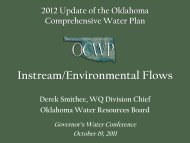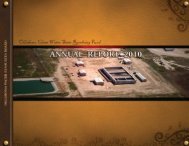Intended Use Plan for FY-2012 - Water Resources Board - State of ...
Intended Use Plan for FY-2012 - Water Resources Board - State of ...
Intended Use Plan for FY-2012 - Water Resources Board - State of ...
Create successful ePaper yourself
Turn your PDF publications into a flip-book with our unique Google optimized e-Paper software.
ger) or Check Up Program <strong>for</strong> Small Systems (CUPSS) (http://www.epa/cupss) todocument current energy usage and track anticipated savings.3.5 Examples <strong>of</strong> Projects Requiring a Business Case3.5-1 POTW projects or unit process projects that achieve less than a 20% energyefficiency improvement.3.5-2 Projects implementing recommendations from an energy audit that are nototherwise designated as categorical.3.5-3 Projects that cost effectively eliminate pumps or pumping stations.3.5-4 Infiltration/Inflow (I/I) correction projects that save energy from pumping andreduced treatment costs and are cost effective.3.5-4a Projects that count toward GPR cannot build new structural capacity. Theseprojects may, however, recover existing capacity by reducing flow from I/I.3.5-5 I/I correction projects where excessive groundwater infiltration is contaminating theinfluent requiring otherwise unnecessary treatment processes (i.e. arsenic ladengroundwater) and I/I correction is cost effective.3.5-6 Replacing pre-Energy Policy Act <strong>of</strong> 1992 motors with National ElectricManufacturers Association (NEMA) premium energy efficiency motors.3.5-8a NEMA is a standards setting association <strong>for</strong> the electrical manufacturingindustry (http://www.nema.org/gov/energy/efficiency/premium/).3.5-7 Upgrade <strong>of</strong> POTW lighting to energy efficient sources such as metal halide pulsestart technologies, compact fluorescent, light emitting diode (LED).3.5-8 SCADA systems can be justified based upon substantial energy savings.3.5-9Variable Frequency Drive can be justified based upon substantial energy savings.4.0 ENVIRONMENTALLY INNOVATIVE4.1 Definition: Environmentally innovative projects include those that demonstrate new and/orinnovative approaches to delivering services or managing water resources in a more sustainable way.4.2 Categorical Projects4.2-1 Total/integrated water resources management planning likely to result in a capitalproject.4.2-2 Utility Sustainability <strong>Plan</strong> consistent with EPA‟s SRF sustainability policy.4.2-3 Greenhouse gas (GHG) inventory or mitigation plan and submission <strong>of</strong> a GHGinventory to a registry (such as Climate Leaders or Climate Registry)4.3-3a Note: GHG Inventory and mitigation plan is eligible <strong>for</strong> CWSRF funding.4.2-3b EPA Climate Leaders: http://www.epa.gov/climateleaders/basic/index.htmlClimate Registry: http://www.theclimateregistry.org/4.2-4 <strong>Plan</strong>ning activities by a POTW to prepare <strong>for</strong> adaptation to the long-term effects <strong>of</strong>climate change and/or extreme weather.4.2-4a Office <strong>of</strong> <strong>Water</strong> – Climate Change and <strong>Water</strong> website:http://www.epa.gov/water/climatechange/4.2.5 Construction <strong>of</strong> US Building Council LEED certified buildings or renovation <strong>of</strong> anexisting building on POTW facilities.4.2-5a Any level <strong>of</strong> certification (Platinum, Gold, Silver, Certified).4/21/2010 PART A - CWSRF 10


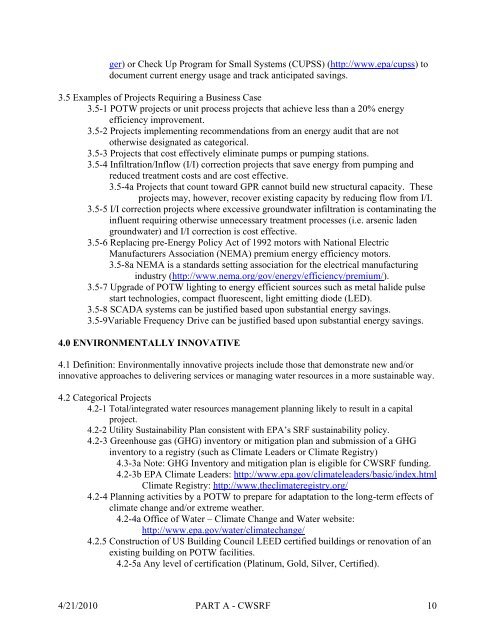

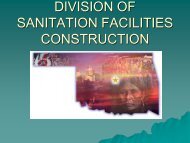
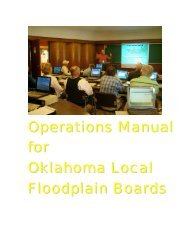
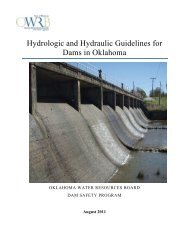
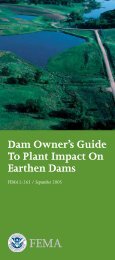

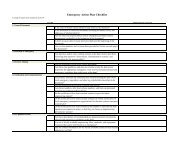
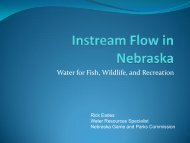


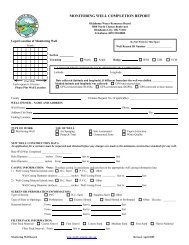
![A Commodity & a Resource [pdf] - Water Resources Board - State of ...](https://img.yumpu.com/42536671/1/190x143/a-commodity-a-resource-pdf-water-resources-board-state-of-.jpg?quality=85)
